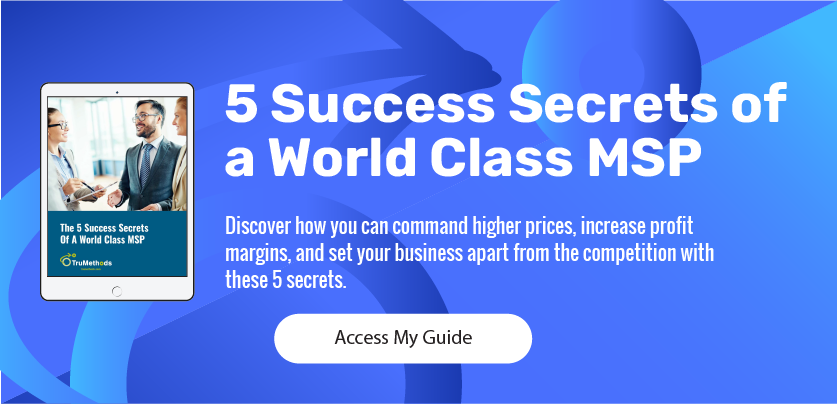Are you looking at your company and wondering how to get your profitability numbers up? You may hear suggestions like “sell more” or “cut your staff.” But, are these really the answers?
For MSPs, it’s often difficult to gauge your profitability levels. There’s no one-size-fits-all answer for increasing your profitability because there are many measurements to be considered.
In this article, we’ll explore some common misconceptions about MSP profitability and explain three of the most important profitability indicators.
Common Misconceptions About MSP Profitability
“All MSPs are profitable.”
When outsiders look at the MSP industry, they may buy into this false impression. After all, all businesses need some kind of IT service provider. But, the demand for MSPs doesn’t mean that existing providers are running profitable operations. In fact, the majority of MSPs are operating at average or below-average profitability levels. Only top MSPs – which make up about 10% of the industry – have profit margins of two to three times higher than the average.
“More recurring revenue equals higher profit margins.”
While this may seem like a logical progression, most MSPs don’t increase their profit margins when they sell more monthly recurring revenue. Why is this? Because average MSPs are botching their packaging and pricing efforts. They’re selling their services at prices that are too low to support their teams. In many cases, selling more monthly recurring revenue could actually make your financial standing worse.
3 Critical MSP Profitability Indicators
Shake the common misconceptions. To increase your MSP profitability, you have to understand the key drivers: leverage, AISP and RHEM.
Leverage
Leverageis the amount of annual service revenue you generate in relation to the total number of employees in your business. To put it simply, leverage is the relationship between an hour worked and a dollar billed to your clients.
By generating more service revenue per employee, you’ll see a dramatic increase in your profitability. Set a target of $150,000 of annual service revenue per employee. Top providers reach leverage targets that are upward of $170,000. If your annual service revenue is under $125,000, you fall into a low-leverage category and should make it a priority to optimize your efforts.
AISP (All In Seat Price)
Are your clients paying you enough to support their IT needs? Your AISP gives you this answer. Calculate your AISP by adding up your average amount of monthly recurring revenue and then dividing that number by the seats you support.
The key to increasing your AISP is using your Super Power as a competitive advantage to increase the value you bring to your customers.
RHEM (Reactive Hours Per Endpoint Per Month)
How much time are you wasting each month addressing reactive IT tickets, or any ticket that doesn’t deal with schedule upgrades or system changes? When you’re working to reactively correct issues for your clients, your team is losing profitability.
By taking a more proactive approach to addressing potential issues with your clients’ IT systems, you’re able to cut down on your reactive time and your clients’ downtime.
Once you’ve assessed your leverage, AISP and RHEM, the work doesn’t stop there. If you see issues with the numbers, it’s time to fix them. Charge more for the seats you support. Increase your leverage by removing roadblocks that stand in the way of employee productivity. Cut down on reactive hours by taking a more proactive approach to your services.
Learning how to effectively maximize your profitability is an important step toward becoming a top MSP.


